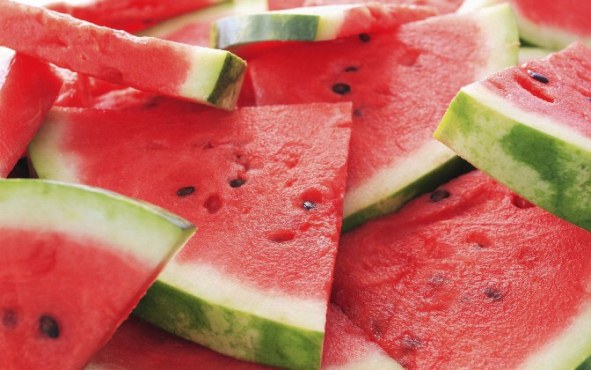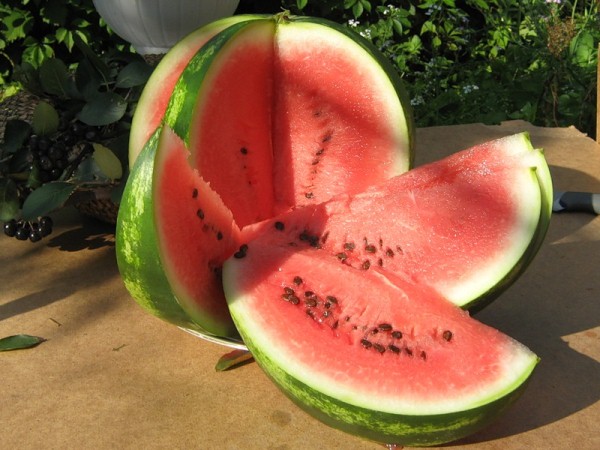How to grow a watermelon hydroponically and what it takes
Content
Features of the method
Many farmers today actively use this method of growing many fruit and vegetable crops (tomatoes, cucumbers, pumpkin, watermelon, etc.) as hydroponics. By definition, hydroponics is a variety of techniques developed for growing crops without soil. These methods involve the use of artificial substrates of different origins.
In hydroponics, all the necessary plant substances are obtained from specially prepared nutrient media. It is worth noting that when growing watermelons or any other plant, the nutrient solutions needed will have a variety of nutrients.
Depending on the method, plant roots can be obtained from nutrient solutions by various methods. It is the nutrient solution that plays a major role in hydroponics. The normal and effective development of the growth (especially watermelons and other melons), as well as the optimal parameters of the harvest, depends on how correctly it is selected.
Thus, hydroponics, when compared to conventional soil cultivation, has the following advantages:
- minimization of the costs of plants for the search for nutrients. With hydroponics, watermelons immediately receive the necessary set of nutrients, which are fed directly to the roots;
- simplification of the growth process of overgrowth;
- the yield of watermelons increases;
- you can harvest throughout the year;
- ease of maintaining cleanliness and order in a room with grown plants.
In addition, in the course of soil cultivation, watermelons are at risk of infection with various diseases, as well as attacks by harmful insects. This is due to the fact that pathogenic microorganisms actively multiply in the soil. Hydroponics completely eliminates the infection of sprouts or damage to them by insects.
Separately, it should be noted that all the basic agricultural techniques in this situation are practically no different from those used in the standard soil method.
As you can see, it is very profitable and effective to grow watermelons using hydroponics at home. So you can protect them from negative environmental factors, because the method involves the growth of plants in specially equipped rooms - greenhouses. In addition, hydroponics can significantly increase the volume and quality of the resulting crop. Watermelons grown by this method have excellent taste and are large (depending on the variety, of course) in size.
Video "How to Build Hydroponics at Home"
Growing conditions
Growing watermelon and other melons and gourds using hydroponics is no more difficult than growing other garden plants. This is due to the fact that almost all cultivated crops in our country have similar technological processes:
- seed preparation;
- growing seedlings;
- planting in the ground;
- further care and watering.
It is worth noting that in hydroponic greenhouses, watermelons are often grown as tomato compactors.But there are cases when the watermelon grows as an independent culture. For the hydroponic method, the following varieties of watermelons are suitable: Skvirsky early ripening, Skorospelka Kharkiv, Ogonyok, Stokes, Rose of the Yugo-Vostoka, Hybrid 1783, Luch. Getting watermelon seedlings follows the same scheme as tomatoes. In hydroponic greenhouses, plant seeds are sown 0.4 g / m2... In this case, the finished seedlings should have 4-5 true leaves.
For a culture, one of the main conditions for proper cultivation is the presence of a warm substrate (20-24 ° C). In this regard, it is quite problematic to grow watermelons and other melons and gourds in greenhouses without proper technical heating of the existing substrate. In addition, you need to know that watermelons are demanding on heat throughout the entire period of their growth. Therefore, in a hydroponic greenhouse, the air temperature should be about 3-4 degrees higher than for cucumbers and tomatoes.
When the air temperature inside the greenhouse rises above 30 ° C, the room must be ventilated. This situation is especially true on sunny days. With regard to the need for growth factors, then watermelons in this matter are similar to greenhouse cucumbers. But at the same time they are more demanding on light. High adaptability to air drought was noted for watermelons.
The exactingness of a given culture to the relative humidity of air and substrate is different at different periods of its development. These parameters are more important during the flowering period, as well as the formation of fruits. During these periods, the substrate must be moistened 1-2 times a day. Otherwise, instead of fruits, leaves and stems will begin to form, thereby delaying the fruiting period.
The relative humidity for watermelon and other melons (especially melons) should be about 65-70%. When the flowering period begins, this figure should be reduced to 60-65%. Such air humidity will create optimal and comfortable conditions for pollination of plants.
In the course of watering watermelons, the substrate on which they are grown must be moistened with a nutrient solution 3-4 times a day. Further, during the ripening period, the substrate is moistened 2-3 times a day. Thus, moderate, correct watering and moisturizing of the substrate will ultimately allow for the collection of sweeter watermelons.
As for the composition of the nutrient solution, it may fluctuate slightly depending on what kind of plant you plan to grow. Coconut can be used as a substrate. The list of micro and macro elements for watermelons practically coincides with those that are needed for the growth of cucumbers and tomatoes.
Hydroponics, if you observe all the basic conditions necessary for the normal growth and development of watermelons, will allow you to have this delicious fruit on your table almost all year round. At the same time, the taste and size of the crop harvested from the greenhouse will be excellent.
Where does hydroponics play?
Hydroponics in the modern world plays an important role in the cultivation of many crops, including watermelons, tomatoes, cucumbers, etc. This method is a new milestone in horticulture, allowing the transition from horizontal to vertical farming.
In addition, using this method allows you to:
- grow plants in places where traditional agriculture cannot guarantee a quality result. In addition, the influence of climatic conditions on the growth and development of plants is minimized. In hydroponic greenhouses, optimal conditions can be created for both the heat-loving watermelon and the pumpkin and cucumber;
- with an established cultivation technology, it is possible to significantly increase and expand the volume of the resulting crop;
- cultivate watermelons even in the city walls;
- to minimize the volume of soil from which you can get many times more harvest than with the traditional soil method;
- rational use of water and nutrients, the calculation of which is carried out on the basis of the type and variety of the plant;
- recycling and reuse of water, which can significantly reduce its consumption;
- minimize the risk of plant infection with pathogens and insect pests.
As you can see, hydroponics is the future, and growing watermelons by this method will provide you with a full and high-quality harvest.
Video "Growing watermelons in a greenhouse"
In this video, you will learn how to quickly and efficiently grow any varieties of melons in hydroponics. This simple method is capable of producing a good harvest of watermelons.






